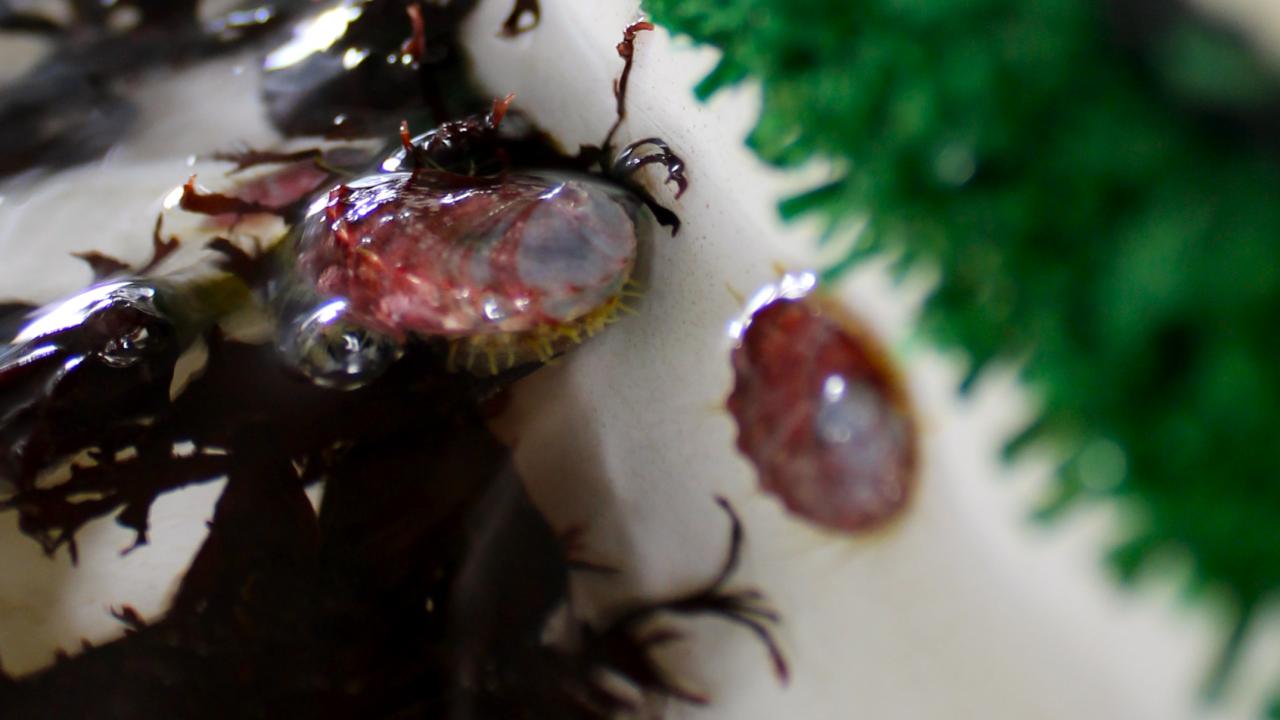
Spawning Success for White Abalone
Efforts to bring populations of endangered white abalone back from the brink of extinction through captive breeding appear to be working, according to scientists at the UC Davis Bodega Marine Laboratory.
In 2012, UC Davis researchers achieved the first successful captive spawning of the endangered white abalone in nearly a decade. The breeding program had about 70 abalone then. After four more successful spawning events in 2013 and 2014, there are now a few thousand animals in captivity through the program. The scientists are hopeful for even greater numbers as they gear up for another spawning season this spring.
“We now have enough abalone in the program where we can start thinking about testing strategies to put some back into the ocean,” said Kristin Aquilino, a postdoctoral scholar at Bodega Marine Laboratory. “We’re not where we need to be for large-scale outplanting yet. To really save the species, we’re going to need to produce even more animals each year, but we’re excited about this increase.”
The scientists credit the successful spawning to a few tweaks in their process. Over time, they have incorporated more animals into each spawning attempt, which increases the chances of getting both males and females to spawn. More sophisticated facilities also allow scientists to better control the diet of young abalone at key times of their development. For example, natural fatality rates can climb above 90 percent when abalone transition from the swimming larval stage into crawling snails. Increasing their survival even by 1 percent can mean a difference of thousands of animals.
If breeding white abalone is so difficult in a controlled environment, what chance might they have in the wild, open ocean? It helps to remember that the decline of white abalone was due to overfishing, and not habitat destruction.
“If they were successfully reproducing without us before we fished them all away, hopefully whatever they need is still out there,” Aquilino said. “Their habitat is still great, so maybe captive-bred animals can thrive in the wild even better than in the lab. But their population needs a kickstart.”
Media Resources
- This story first appeared on the UC Davis Egghead blog